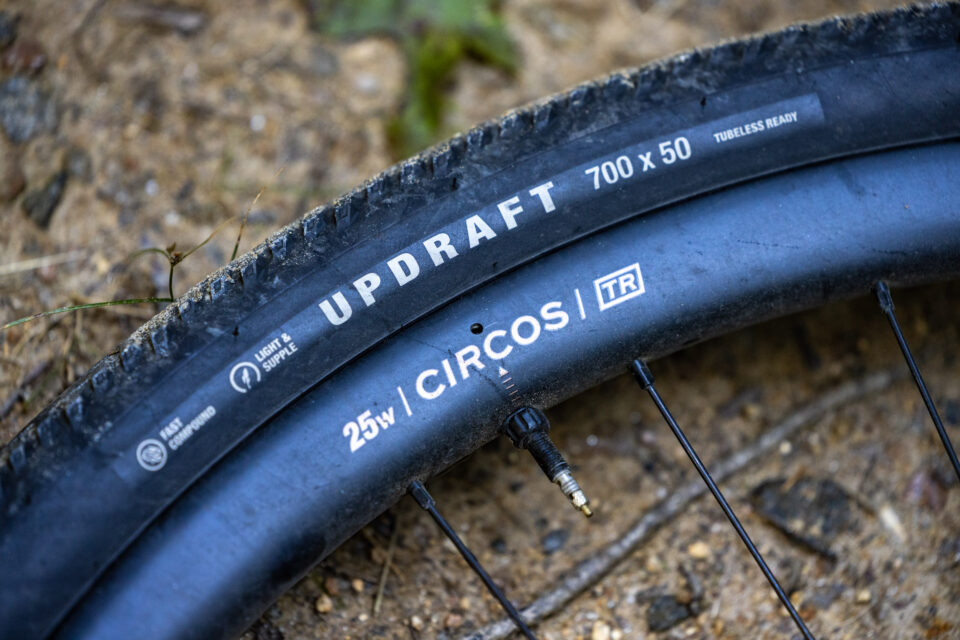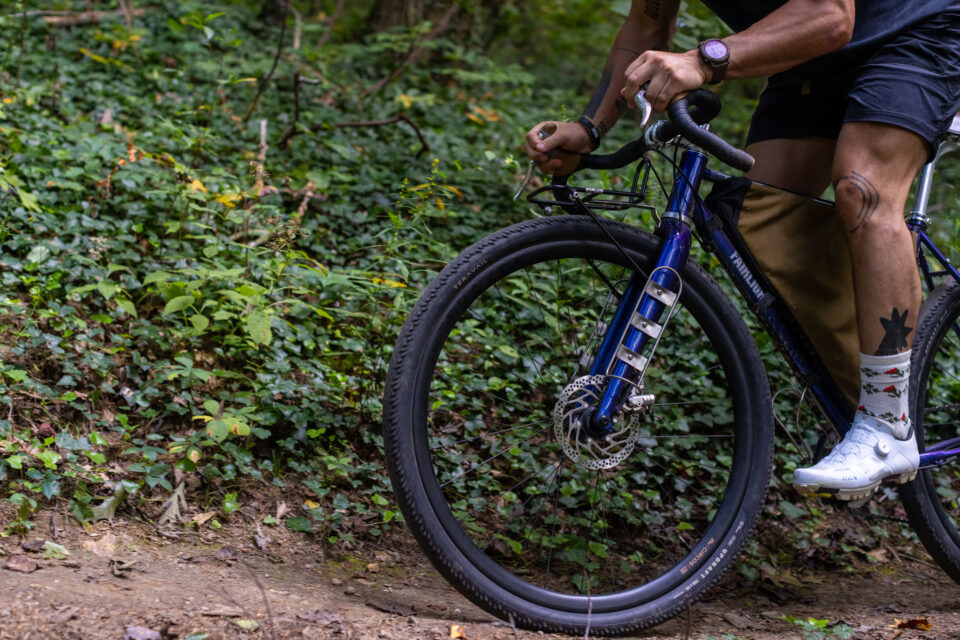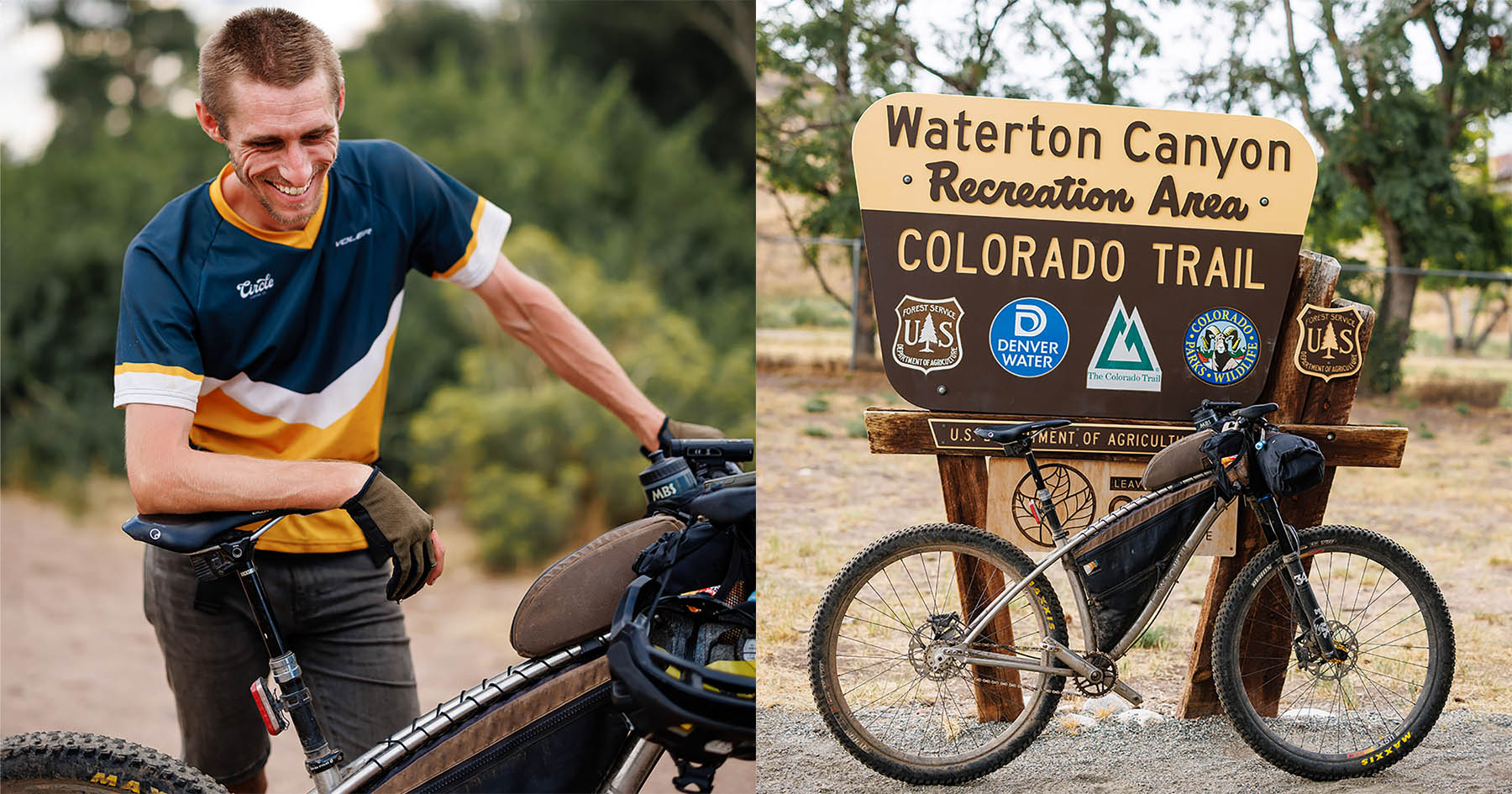PROTECT YOUR DNA WITH QUANTUM TECHNOLOGY
Orgo-Life the new way to the future Advertising by AdpathwaySemi-slick tires have a varied reputation in the cycling world. Some see them as true, do-it-all options, and others view them as entirely unfit for purpose. When the Teravail Updraft tire was released earlier this year, Nic eagerly jumped at the chance to test a set. In his Teravail Updraft review, he asks if this wide, semi-slick gravel tire makes sense for the kind of all-road riding it’s marketed for…
Riding shots by Luis Espel.
The Teravail Updraft was part of a larger release from the brand that saw new tires and rims added to their new line of gravel-specific offerings in March of this year. Featuring a wide, semi-slick center tread and diamond-shaped studs on its edges, the Updraft seemed more all-road from the get-go than a true gravel tire. That said, people’s definition of the latter term is still hotly contested. Offered in 700 x 35mm, 40mm, 45mm, and 50mm widths, as well as two casing options—Light and Supple and Durable—the Updraft looked like a tire trying to cover a broad range of riding styles. For my Teravail Updraft review, the option I spent the most time with was the 120 TPI, 580-gram Light and Supple option that is also denoted as a “Fast” compound in the 50mm width.
While wider tires of all kinds are in vogue these days, some credit is needed regarding their mainstream popularity. Though many contributed to the trend, it’s no secret that Jan Heine has long been sounding the horn for wide rubber, particularly as it pertains to slick and semi-slick tires. Rene Herse Cycles, formerly Compass Tires, has been manufacturing wide slicks with file tread patterns for years, and the release of something like the Updraft, among others in the same space, seems to signal a general acceptance of wide, road-oriented rubber. While the Teravail Updrafts aren’t true slicks due to their semi-slick center tread and minor side knobs, my experience with them mirrors many of the positive aspects I’ve found in wider slick tires.
In addition to the diamond-shaped pattern located on the very edges of its tread, the Updraft also features a file-tread through the middle, seemingly combining the best of both worlds into one tire. In an almost 3D-printed-like design, the long, vertical strips through the center of the tread line provide some variation in the main contact patch. Where knobby tires provide different angles of attachment for the less predictable and consistent surface found in off-road riding, a file tread looks to do something similar on a much more consistent surface. Asphalt, while hard and relatively even, is still not a perfect surface. Consistent but rough, the file tread found on tires like these can hook up to the minor inconsistencies in the terrain better than a fully slick tire, deforming ever so slightly to create a better grip across the surface.
So goes the theory, anyway. In practice, this file tread system works about as well as many of the others I’ve tried in a similar category, with one caveat. After about 500 or so miles, the rear tire’s variations had largely been worn away. Either due to heavy braking or simply a fair number of rough miles, the rear tire seemed to operate more like a true slick, and it offered far less grip after losing the more pronounced edges of the file tread. To see such an early deterioration in the performance of the tire after a limited test period was a little disappointing, but I’ve continued riding the tire and still found a lot to like.
With respect to the side knobs present at the edges of the tires, I didn’t have much faith in their ability to make a difference, given how low-profile the height and position of the knobs are. That said, with plenty of dirt to hit within and just outside Asheville’s city limits, I’m happy to report that the knobs really seem to make a difference. With a noticeable amount of traction after the bike has leaned past a certain point, the knobs hook up well on loose surfaces and provide a meaningful amount of grip on gravel roads and rocky descents. While out bikepacking, the tire performed admirably on mixed terrain with a loaded bike. Holding their ground a bit more with the added weight of a full load, out of the saddle efforts were less of an issue, as it seems the concentrated weight added the necessary downforce needed in order to get the best out of the Updrafts. Though knobby offerings would obviously serve riders better on singletrack heavy tours, overnighters with a fair bit of pavement would be the perfect time to break out these semi-slicks.
Regarding the ride feel of the Updraft, Teravail’s tires always seem to shoot the gap between supple and durable. While my time in cycling media has made me more accustomed to the finer side of the rubber market, recent ventures on some OEM tires reminded me that bottom-of-the-barrel offerings really are exactly that. Tires make a huge difference in how comfortable a bike can feel, in addition to an appropriately dialed sense of tire pressure. The Teravail Updrafts, while not anything near as supple as an Ultradynamico (JFF) or Rene Herse tire, are a far cry from a harsh stock tire.
Running a consistent 35 psi on both front and rear tires felt correctly compliant while also straying away from the squirming sometimes found under heavy braking with an under-pressured front tire. Moreover, the tires seemingly gained comfort as the weeks went on, almost wearing into their casing. Like many of Teravail’s other options, the Updrafts are a solid middle ground for those seeking puncture protection and the kind of comfort that is commonplace in today’s boutique tire market, as I suffered zero punctures and had no sidewall weeping of any kind over roughly 1,200 aggregated miles on two different sets of Updrafts.
With a bit of sealant residue, they’re above the stated weight.
Though the definition of “gravel” remains somewhat contested, it seems the grip available through the Updraft’s 50mm width, in conjunction with the performance of its solid side knobs make it a solid “gravel tire.” I’m still not sure what that term really means, or what a gravel tire is from the perspective of use, as I spec smaller mountain bike tires on any bike that has the clearance to fit them. Obviously, what you choose to wrap your wheels in depends on where, what, and how you ride, but for the mixed terrains I tend to shoot for on my road-oriented gravel bikes, these tires are good enough to serve as both a lighter off-road option for bikes you’re going to pedal to trails and gravel roads.
- Model Tested: Teravail Updraft, Light and Supple, 50mm
- Actual Weight: 592 grams
- Place of Manufacture: Taiwan
- Price: $80 at Teravail
- Manufacturer’s Details: Teravail
Pros
- Wide, semi-slick rubber makes for a great all-road tire if you have the willingness to take it anywhere.
- Tested rubber compound held up against glass, root, and rocks just fine.
- Side knobs appeared to dig in to the dirt enough to make a real difference.
- It’s a pretty fast tire given the weight and durable compound.
- Supple!
Cons
- The file tread and its initial effect wears away quickly and is largely ineffective after a few hundred miles.
- A semi-slick will always be a jack of all trades and a master of none.
- I seriously doubt the tires perform as well at lesser widths.
- The stated weight differed from the actual by almost 10 grams. That’s almost two whole credit cards!
Wrap Up
The Teravail Updraft surprised me with the amount of grip present on both paved and unpaved surfaces, particularly when it came to the loose, rocky roads of the Pisgah National Forest. With enough rubber to stay protected in urban environments but a fast enough compound to feel good across a variety of terrains, the Updraft excels as a true all-road tire. However, semi-slicks always seem to have a drawback, and this tire is no exception. With a fair bit of slippage during out-of-the-saddle efforts and a quickly deteriorating sense of grip as the miles accumulate, they’re by no means a viable set-it-and-forget-it long-term option. Though the loss of grip has bottomed out over time, it would be nice if the initial compound wore a bit more evenly over time instead of in the dramatic, and then gradual fashion I experienced. That said, I can’t ding them too much for their lack of grip in this department, as only truly knobby tires can hold their line on the slick, wet rocks we have plenty of in southern Appalachia, and I am known to be quite rough on all of my equipment. Overall, I’m happy with their performance to this day, and I would gladly spec them on any all-road focused gravel bike in my quiver.
Further Reading
Make sure to dig into these related articles for more info...
Please keep the conversation civil, constructive, and inclusive, or your comment will be removed.























 English (US) ·
English (US) ·  French (CA) ·
French (CA) ·